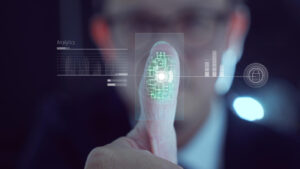Facial recognition technology has gained remarkable momentum in recent years, and its integration into wearable devices is a notable trend that deserves attention feels Bahaa Abdul Hadi. In this blog, we delve into the fascinating world of facial recognition on wearable devices, exploring its applications and raising critical ethical considerations.
As a powerful tool, facial recognition offers promising advantages, including enhanced security, personalized experiences, and improved health tracking. However, it is essential to navigate the ethical landscape surrounding this technology.
Practical Applications of Facial Recognition on Wearable Devices
Facial recognition on wearable devices unlocks a realm of practical applications that enhance various aspects of our lives. First, it revolutionizes security and access control by providing seamless authentication, replacing traditional methods like passwords or PINs. Wearable devices equipped with facial recognition enable convenient and personalized experiences, such as tailored settings and preferences based on individual facial profiles.
Furthermore, the technology complements health and fitness tracking, allowing for accurate identification of users and personalized data analysis. Additionally, when integrated with augmented reality and virtual reality, facial recognition enhances immersion and interaction, creating captivating experiences.
Ethical Considerations in Facial Recognition on Wearable Devices
Facial recognition on wearable devices raises important ethical considerations that demand our attention. One primary concern revolves around privacy, as the collection and storage of facial data may pose risks of unauthorized access or misuse. Another critical issue is the potential for biases and discrimination embedded in facial recognition algorithms, which can disproportionately affect marginalized communities.
Additionally, questions of consent and user control over their facial recognition data arise, highlighting the need for transparency and informed choices. Plus, the use of facial recognition on wearable devices introduces surveillance implications, necessitating a delicate balance between security and individual privacy rights. Exploring these ethical considerations is vital in ensuring the responsible development and deployment of facial recognition technology on wearable devices.
Balancing Innovation and Responsibility
Balancing innovation and responsibility is crucial when it comes to facial recognition on wearable devices. Developers and manufacturers must adhere to ethical guidelines to ensure the responsible use of this technology. Collaboration among technology companies, policymakers, and advocacy groups is essential to establish clear framework guidelines that safeguard user rights and privacy.
Transparent and inclusive decision-making processes must be adopted to address the concerns of all stakeholders. Striking the right balance between innovation and responsibility entails considering the potential consequences of facial recognition on wearable devices, mitigating ethical concerns, and prioritizing the well-being and rights of individuals.
Conclusion
Facial recognition on wearable devices presents a world of possibilities, yet it comes with significant ethical considerations. By exploring its practical applications and delving into the associated ethical concerns, we have highlighted the need for a balanced approach.
Responsible development, transparency, and user empowerment are pivotal in navigating this evolving landscape. It is crucial to address privacy risks, biases, consent, and surveillance implications to ensure the technology’s ethical use. As we move forward, ongoing research, public dialogue, and regulatory efforts are imperative.
The blog has been authored by Bahaa Abdul Hadi and has been published by the editorial board of Identity Herald. For more information, please visit www.identityherald.com




